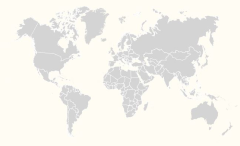Mr. C. C. Nieh was a Chinese engineer and public official who contributed a lot into the development of cotton industry in China, provided people with work places. In 1919 he organized the Great China Cotton Mill and became its general manager.
Background
Mr. C. C. Nieh was born in 1880 at Changsha, Hunan. His father was the late Chih-kuei, Taotai of Shanghai and Governor of Kiangsu and Chekiang Provinces. Governor Nieh, it will be remembered, was the first man in China to build iron clad ships and 12 inch guns, while acting as director of the Kiangnan Arsenal. Mr. Nieh’s maternal grandfather was Marquis Tseng Kuo-fang China’s famous statesman. When only two years old Mr. Nieh was brought to Shanghai by his family.
Education
Like sons of all Chinese high officials at that time Mr. Nieh was educated under private tutorage together with his five brothers and four sisters. Mr. Nieh pursued courses in engineering, electrical and chemical engineering, without teachers and was considered not only an officient engineer but also one of the best English speaking Chinese orators in the country.
Career
In 1904 Mr. Nieh gathered together his influential friends and purchased the Heng Foong Cotton Mill in Yangtszepoo. The mill which had 15,000 spindles was running at a loss. To reorganise the plant an uphill fight was indeed but Mr. Niehnafter persistent hard labor succeeded in showing a profit on the balance sheet by the end of the sixth year of its reorganization.
The Heng Foong Cotton Mill gave employment to 1,500 people and was capitalised at Tls. 1,500,000. The mill maintained ten scholarships in the Technical College, Nantungchow, two in France and two in the United States and a few in England. It also maintains a school within the mill, administered by two superintendents educated in Japan.
Mr. Nieh was Vice-President of the Chinese Commercial Commission to the United States in 1915 as a return visit to the Pacific Commercial Commission. During his visit in America he extended an invitation to most of the cotton experts he met to visit China and give her their technical advices. As a result of his efforts several of them actually visited China, among them was Mr. Griffin.
For the work of improving Chinese cotton industry Mr. Nieh initated the idea of securing the co-operation of the agricultural department of the University of Nanking. Mr. Nieh was interested in many other cotton mills such as the Dah Sung of Nantungchow, the Dah Sung of Chungming Inland and the Anglo-Chinese Cotton Mill of Shanghai. His relation to them was established through his being either their promoter or their director. He was also a Committee man of the Cotton Mill Owners' Association organized by foreigners, in Shanghai. In 1918 Mr. Nieh organized the Chinese Cotton Mill Owners' Association in Shanghai and was made its first President and was responsible for the organization of the Cotton Improvement Committee. In 1919 he organized the Great China Cotton Mill and became its general manager.
Mr. Nieh was an ardent advocate for the establishment of Vocational Educational Schools and was one of the founders of the Vocational Educational School, West Gate which proved to be a great success attracting students from all parts of the country. In 1920 Mr. Nieh organized a larger school of the same nature. It was equipped with a complete cotton mill, foundry and workship. He became a southern Methodist in 1914 together with Mrs. Nieh. Mr. Nieh was connected with the Y. M. C. A. for about 18 years serving on various committees and as director.
He was also treasurer-director of the National Committee, Y. M. C. A. Among other offices Mr. Nieh held the presidency of the Chinese Cotton Mill Owners’ Association. He was first chairman of the Society for Constructive Endeavor and a member of the A. B. C. Club.
Mr. Neh was also a member of the Chinese Advisory Council, the medium between the Chinese rate payers and the Municipal authorities in Shanghai.
Mr. Nieh translated a book on telegraphy in 1901. He was also awarded by the Peking government the Third Class Paokuang Chiaho in February 1920 and appointed a Member of the Commission for the Raising of Educational Sinking Funds in January 1923.




